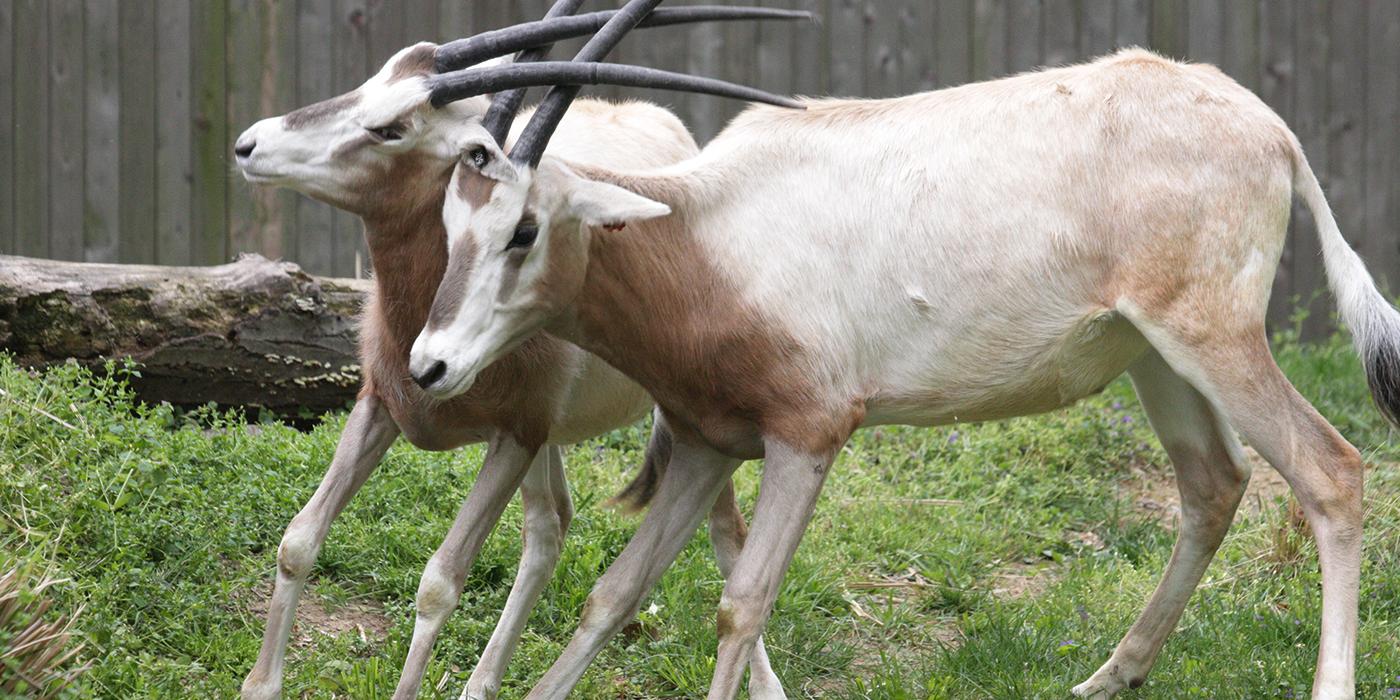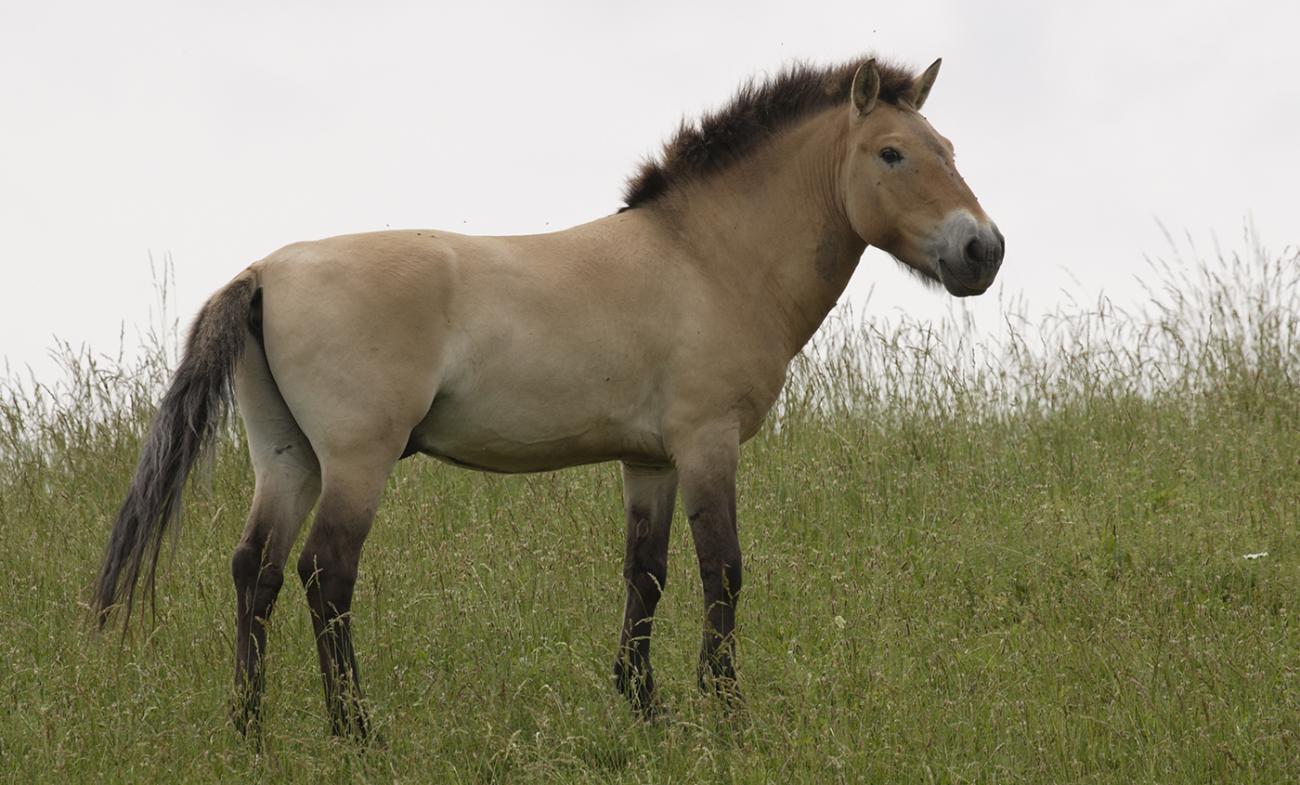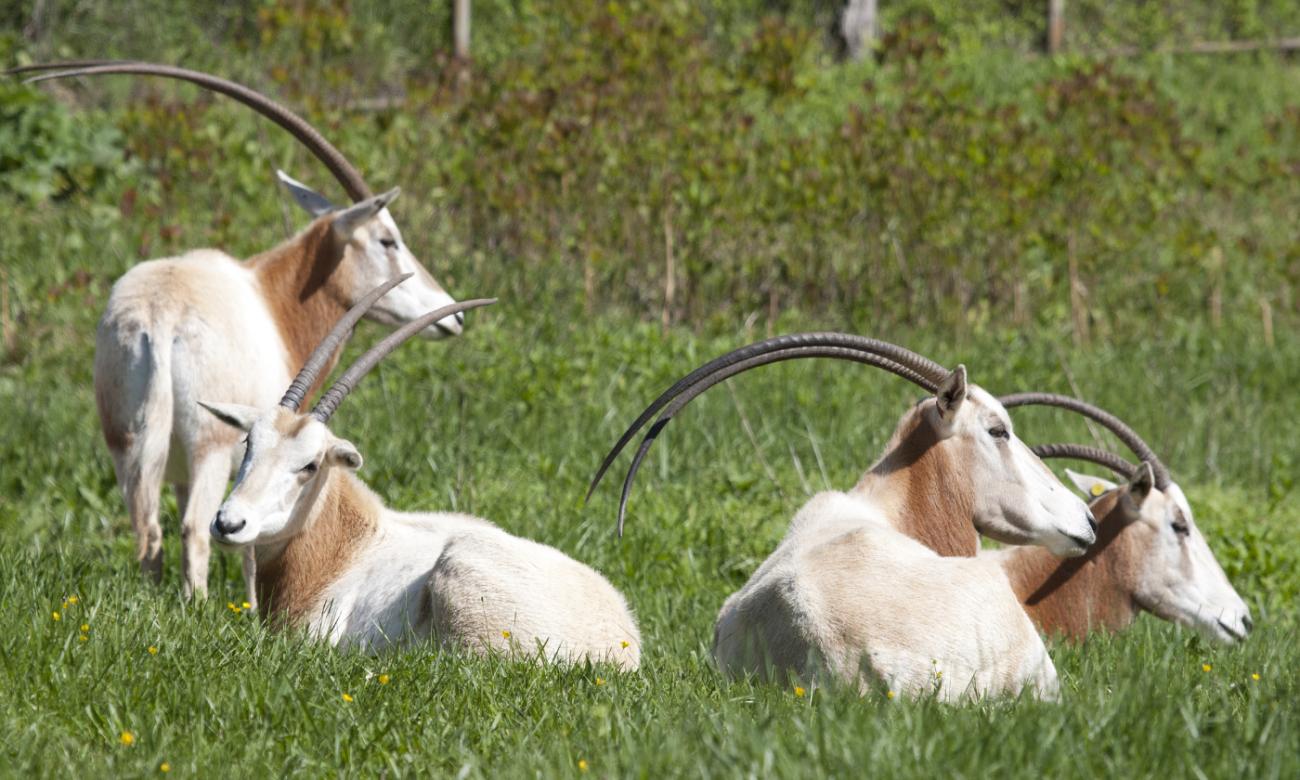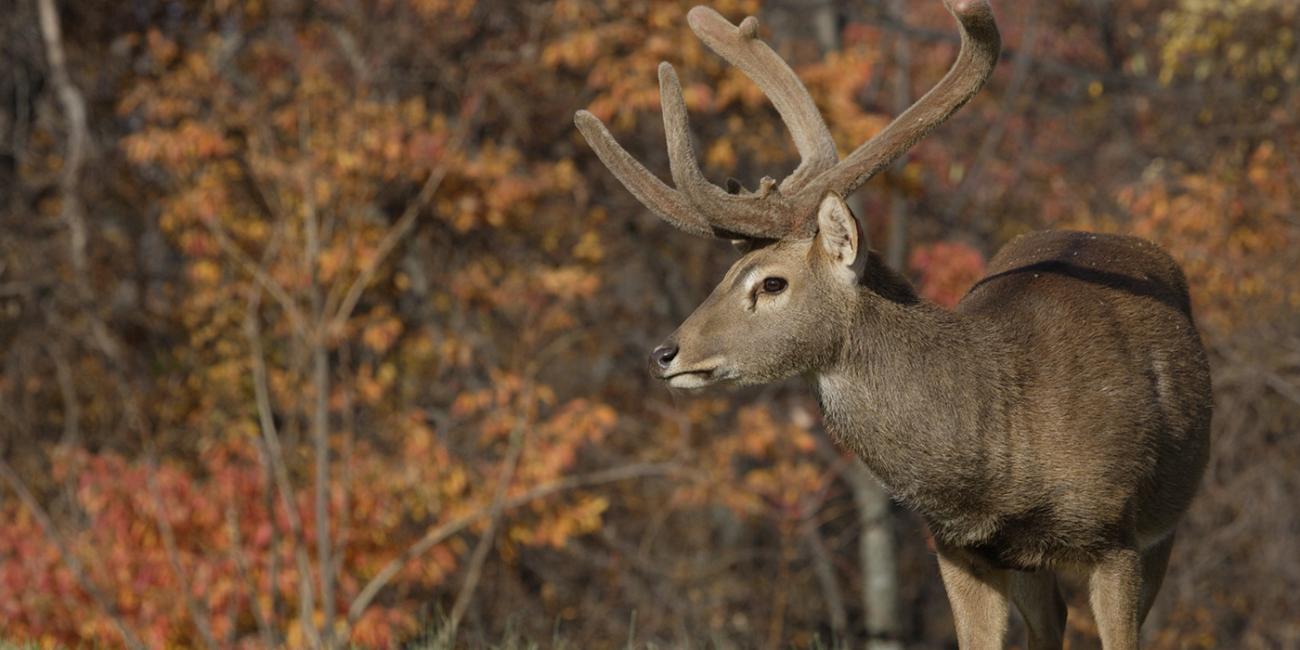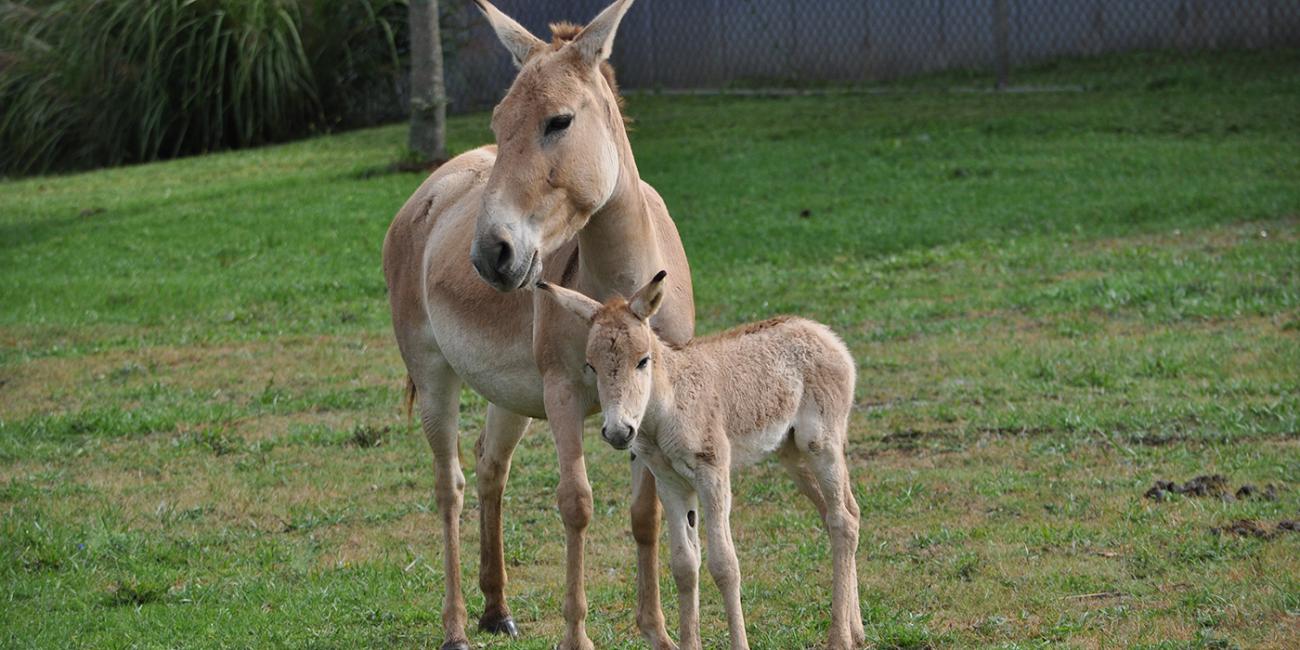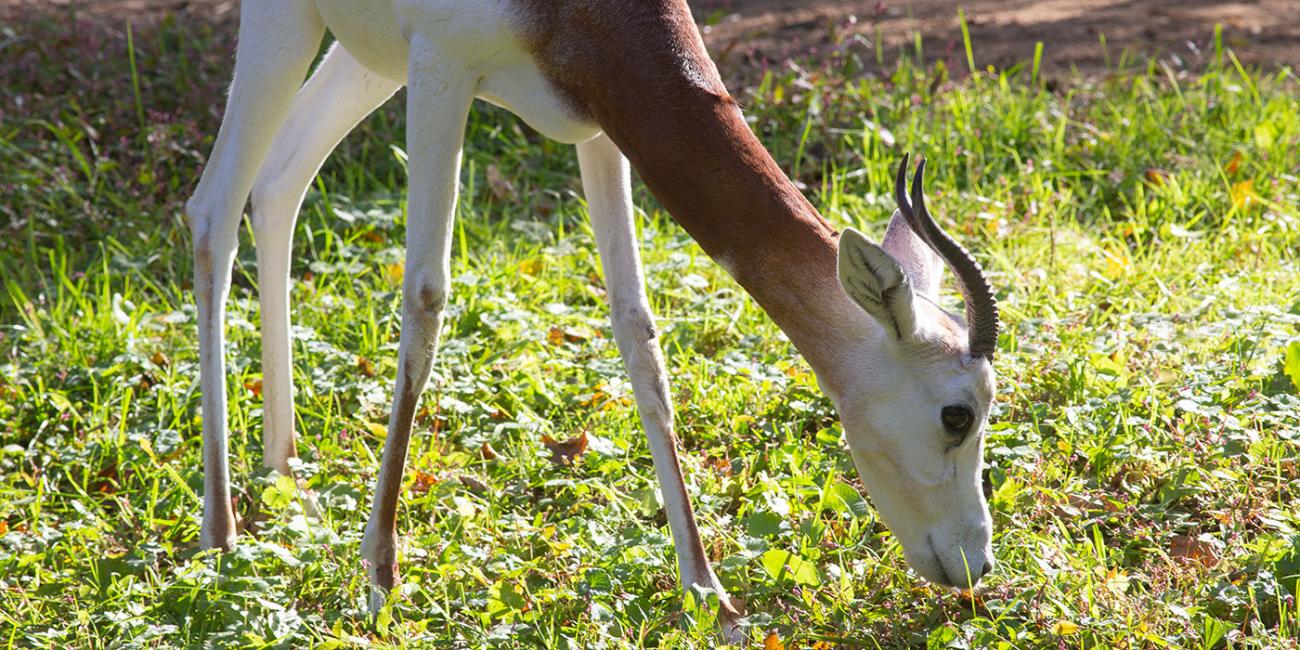Ungulates
The Center for Species Survival’s (CSS) ungulate conservation program is working to increase the fundamental understanding of the reproductive biology of selected, priority ungulates to establish self-sustaining populations both in zoos and in the wild.
According to the IUCN-World Conservation Union, the vast majority of ungulates (hooved animals) are threatened by extinction. Major threats to survival in the wild include trophy hunting and loss of habitat. In contrast, most ungulate species in human care are not self-sustaining due to poor reproduction and small numbers of animals.
CSS scientists were the first to characterize hormone cycles and sperm function of extremely rare ungulates and to produce live offspring via artificial insemination in the Eld’s deer, scimitar-horned oryx, Persian onager and most recently the Przewalski’s horse. Today, efforts also focus on assessing the benefits of managing animals in large herds to facilitate efficient reproduction and minimize animal production costs. CSS scientists employ whole genome analyses of target species to generate novel analytical platforms (single nucleotide polymorphism capture arrays) to estimate gene diversity, relatedness and hybridization in managed populations. Researchers work closely with innovative veterinary medicine and animal care teams at state-of-the-art facilities located at the Smithsonian Conservation Biology Institute in Front Royal, Virginia.
Current Projects
- Sperm cryopreservation and artificial insemination technologies in addra gazelle, Eld’s deer, Persian onager, Przewalski’s horse, scimitar-horned oryx, tapir and tufted deer
- Understanding the relationship between diet and health in black rhinos and tapirs
- Microfluidics technologies for in vitro spermatogenesis—a tool for rescuing genetic material from neonate animals or for fertility preservation
- Genomic tools for analyses of heterozygosity and relatedness in different subpopulations (managed in human care vs. wild populations)
- Novel approaches to early pregnancy detection in ungulates
